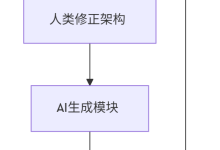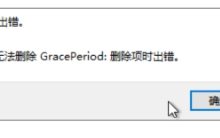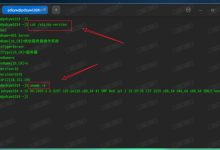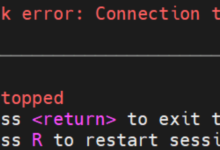服务器运维实战:服务器领域的成功经验
关键词:服务器运维、高可用性、性能优化、监控告警、自动化运维、安全加固、灾备恢复
摘要:本文深入探讨服务器运维领域的核心实践与成功经验,从基础架构设计到高级运维技巧,全面剖析如何构建稳定、高效、安全的服务器环境。文章将系统性地介绍服务器运维的关键环节,包括性能调优、监控体系构建、自动化运维实施、安全防护策略以及灾备方案设计,并结合实际案例和代码示例,为读者提供可落地的技术方案。
1. 背景介绍
1.1 目的和范围
本文旨在为IT专业人员提供服务器运维的全面指南,涵盖从基础到高级的运维技术。我们将重点讨论生产环境中服务器运维的最佳实践,包括但不限于Linux/Windows服务器管理、性能优化、故障排查和安全加固等核心主题。
1.2 预期读者
本文适合以下读者群体:
- 系统管理员和运维工程师
- DevOps工程师和SRE工程师
- 云计算架构师和技术主管
- 对服务器运维感兴趣的技术爱好者
1.3 文档结构概述
本文首先介绍服务器运维的基础概念,然后深入探讨各项关键技术,最后通过实际案例展示如何将这些技术应用于真实场景。每个章节都包含理论讲解和实践指导,确保读者能够学以致用。
1.4 术语表
1.4.1 核心术语定义
- SLA(服务等级协议):服务提供商与客户之间定义的服务质量指标
- MTTR(平均修复时间):系统从故障到恢复所需的平均时间
- QPS(每秒查询数):系统每秒能够处理的请求数量
- IOPS(每秒输入输出操作):存储设备每秒能够完成的读写操作数量
1.4.2 相关概念解释
- 蓝绿部署:一种无停机部署技术,通过维护两套生产环境实现平滑切换
- 金丝雀发布:逐步将新版本推送给部分用户,以降低风险
- 混沌工程:通过故意引入故障来测试系统弹性的实践
1.4.3 缩略词列表
- HA:高可用性(High Availability)
- LB:负载均衡(Load Balancing)
- CDN:内容分发网络(Content Delivery Network)
- IDC:互联网数据中心(Internet Data Center)
2. 核心概念与联系
服务器运维是一个系统工程,涉及多个相互关联的组件和技术。以下是服务器运维的核心架构示意图:
#mermaid-svg-wBIWamKLRe88XLlO {font-family:\”trebuchet ms\”,verdana,arial,sans-serif;font-size:16px;fill:#333;}#mermaid-svg-wBIWamKLRe88XLlO .error-icon{fill:#552222;}#mermaid-svg-wBIWamKLRe88XLlO .error-text{fill:#552222;stroke:#552222;}#mermaid-svg-wBIWamKLRe88XLlO .edge-thickness-normal{stroke-width:2px;}#mermaid-svg-wBIWamKLRe88XLlO .edge-thickness-thick{stroke-width:3.5px;}#mermaid-svg-wBIWamKLRe88XLlO .edge-pattern-solid{stroke-dasharray:0;}#mermaid-svg-wBIWamKLRe88XLlO .edge-pattern-dashed{stroke-dasharray:3;}#mermaid-svg-wBIWamKLRe88XLlO .edge-pattern-dotted{stroke-dasharray:2;}#mermaid-svg-wBIWamKLRe88XLlO .marker{fill:#333333;stroke:#333333;}#mermaid-svg-wBIWamKLRe88XLlO .marker.cross{stroke:#333333;}#mermaid-svg-wBIWamKLRe88XLlO svg{font-family:\”trebuchet ms\”,verdana,arial,sans-serif;font-size:16px;}#mermaid-svg-wBIWamKLRe88XLlO .label{font-family:\”trebuchet ms\”,verdana,arial,sans-serif;color:#333;}#mermaid-svg-wBIWamKLRe88XLlO .cluster-label text{fill:#333;}#mermaid-svg-wBIWamKLRe88XLlO .cluster-label span{color:#333;}#mermaid-svg-wBIWamKLRe88XLlO .label text,#mermaid-svg-wBIWamKLRe88XLlO span{fill:#333;color:#333;}#mermaid-svg-wBIWamKLRe88XLlO .node rect,#mermaid-svg-wBIWamKLRe88XLlO .node circle,#mermaid-svg-wBIWamKLRe88XLlO .node ellipse,#mermaid-svg-wBIWamKLRe88XLlO .node polygon,#mermaid-svg-wBIWamKLRe88XLlO .node path{fill:#ECECFF;stroke:#9370DB;stroke-width:1px;}#mermaid-svg-wBIWamKLRe88XLlO .node .label{text-align:center;}#mermaid-svg-wBIWamKLRe88XLlO .node.clickable{cursor:pointer;}#mermaid-svg-wBIWamKLRe88XLlO .arrowheadPath{fill:#333333;}#mermaid-svg-wBIWamKLRe88XLlO .edgePath .path{stroke:#333333;stroke-width:2.0px;}#mermaid-svg-wBIWamKLRe88XLlO .flowchart-link{stroke:#333333;fill:none;}#mermaid-svg-wBIWamKLRe88XLlO .edgeLabel{background-color:#e8e8e8;text-align:center;}#mermaid-svg-wBIWamKLRe88XLlO .edgeLabel rect{opacity:0.5;background-color:#e8e8e8;fill:#e8e8e8;}#mermaid-svg-wBIWamKLRe88XLlO .cluster rect{fill:#ffffde;stroke:#aaaa33;stroke-width:1px;}#mermaid-svg-wBIWamKLRe88XLlO .cluster text{fill:#333;}#mermaid-svg-wBIWamKLRe88XLlO .cluster span{color:#333;}#mermaid-svg-wBIWamKLRe88XLlO div.mermaidTooltip{position:absolute;text-align:center;max-width:200px;padding:2px;font-family:\”trebuchet ms\”,verdana,arial,sans-serif;font-size:12px;background:hsl(80, 100%, 96.2745098039%);border:1px solid #aaaa33;border-radius:2px;pointer-events:none;z-index:100;}#mermaid-svg-wBIWamKLRe88XLlO :root{–mermaid-font-family:\”trebuchet ms\”,verdana,arial,sans-serif;}
服务器运维
基础设施管理
性能优化
监控告警
自动化运维
安全防护
灾备恢复
硬件选型
操作系统配置
网络设置
CPU优化
内存优化
磁盘IO优化
网络优化
指标采集
日志收集
可视化展示
告警策略
配置管理
持续部署
批量操作
访问控制
漏洞管理
入侵检测
数据备份
故障转移
灾难恢复
服务器运维各组件之间的关系可以概括为:基础设施管理是基础,性能优化和监控告警是保障,自动化运维是效率提升的关键,安全防护是必须的防线,灾备恢复是最后的保障。
3. 核心算法原理 & 具体操作步骤
3.1 服务器性能优化算法
服务器性能优化的核心是资源调度算法,下面以Linux的CFS(完全公平调度器)为例:
# 简化的CFS调度算法原理演示
import heapq
class Task:
def __init__(self, pid, nice):
self.pid = pid
self.nice = nice # -20到19,值越小优先级越高
self.vruntime = 0 # 虚拟运行时间
def __lt__(self, other):
# 比较函数,用于堆排序
return self.vruntime < other.vruntime
class CFS:
def __init__(self):
self.tasks = []
self.min_granularity = 0.75 # 最小调度时间片(ms)
self.latency = 6.0 # 调度延迟(ms)
def add_task(self, task):
heapq.heappush(self.tasks, task)
def schedule(self):
if not self.tasks:
return None
# 计算时间片
nr_running = len(self.tasks)
slice_time = max(self.min_granularity, self.latency / nr_running)
# 获取当前任务
current = heapq.heappop(self.tasks)
# 更新虚拟运行时间
weight = 1024 / (1.25 ** current.nice) # 根据nice值计算权重
current.vruntime += slice_time * (1024 / weight)
# 重新加入队列
heapq.heappush(self.tasks, current)
return current.pid, slice_time
# 使用示例
cfs = CFS()
cfs.add_task(Task(1, 0)) # 普通优先级
cfs.add_task(Task(2, –5)) # 较高优先级
cfs.add_task(Task(3, 10)) # 较低优先级
for _ in range(10):
print(cfs.schedule())
3.2 服务器监控数据采集算法
高效的监控数据采集需要考虑采样频率和数据聚合,以下是时间序列数据采集的核心算法:
import time
from collections import deque
import statistics
class TimeSeriesCollector:
def __init__(self, max_points=3600):
self.data = deque(maxlen=max_points)
self.last_collect_time = time.time()
def collect(self, value):
now = time.time()
elapsed = now – self.last_collect_time
self.last_collect_time = now
# 简单的数据平滑处理
if self.data:
last = self.data[–1]
smoothed = 0.7 * last + 0.3 * value
self.data.append(smoothed)
else:
self.data.append(value)
return elapsed
def get_stats(self, window=60):
"""获取最近window秒内的统计信息"""
recent = [v for v in self.data][–window:]
if not recent:
return None
return {
'min': min(recent),
'max': max(recent),
'avg': statistics.mean(recent),
'median': statistics.median(recent),
'stddev': statistics.stdev(recent) if len(recent) > 1 else 0
}
# 使用示例
collector = TimeSeriesCollector()
# 模拟数据采集
for i in range(100):
value = i + (10 if i % 20 == 0 else 0) # 模拟偶尔的峰值
collector.collect(value)
time.sleep(0.1)
print("Recent stats:", collector.get_stats())
4. 数学模型和公式 & 详细讲解 & 举例说明
4.1 服务器性能容量规划模型
服务器容量规划需要考虑多个因素,可以使用排队论中的M/M/c模型:
P
0
=
[
∑
k
=
0
c
−
1
(
c
ρ
)
k
k
!
+
(
c
ρ
)
c
c
!
(
1
−
ρ
)
]
−
1
P_0 = \\left[ \\sum_{k=0}^{c-1} \\frac{(c\\rho)^k}{k!} + \\frac{(c\\rho)^c}{c!(1-\\rho)} \\right]^{-1}
P0=[k=0∑c−1k!(cρ)k+c!(1−ρ)(cρ)c]−1
其中:
-
c
c
c 是服务器数量 -
ρ
=
λ
/
(
c
μ
)
\\rho = \\lambda/(c\\mu)
ρ=λ/(cμ) 是系统利用率 -
λ
\\lambda
λ 是到达率(请求/秒) -
μ
\\mu
μ 是服务率(请求/秒)
平均响应时间公式:
T
=
1
μ
+
(
c
ρ
)
c
ρ
P
0
λ
c
!
(
1
−
ρ
)
2
T = \\frac{1}{\\mu} + \\frac{(c\\rho)^c \\rho P_0}{\\lambda c! (1-\\rho)^2}
T=μ1+λc!(1−ρ)2(cρ)cρP0
举例说明: 假设我们有一个Web服务:
- 平均请求到达率
λ
=
50
\\lambda = 50
λ=50 请求/秒 - 每台服务器处理能力
μ
=
10
\\mu = 10
μ=10 请求/秒 - 服务器数量
c
=
6
c = 6
c=6
计算系统利用率:
ρ
=
50
6
×
10
≈
0.833
\\rho = \\frac{50}{6 \\times 10} \\approx 0.833
ρ=6×1050≈0.833
计算
P
0
P_0
P0:
P
0
≈
0.0045
P_0 \\approx 0.0045
P0≈0.0045
最终平均响应时间:
T
≈
0.1
+
0.024
≈
0.124
秒
T \\approx 0.1 + 0.024 \\approx 0.124 \\text{秒}
T≈0.1+0.024≈0.124秒
4.2 磁盘IO性能模型
磁盘IO性能可以使用以下公式估算:
IOPS
=
1
寻道时间
+
旋转延迟
+
传输时间
\\text{IOPS} = \\frac{1}{\\text{寻道时间} + \\text{旋转延迟} + \\text{传输时间}}
IOPS=寻道时间+旋转延迟+传输时间1
对于7200 RPM的磁盘:
- 平均旋转延迟 = 60 / (7200 × 2) = 4.17ms
- 平均寻道时间 ≈ 5ms
- 传输时间 ≈ 0.05ms (对于4KB块)
IOPS
≈
1
0.005
+
0.00417
+
0.00005
≈
108
IOPS
\\text{IOPS} \\approx \\frac{1}{0.005 + 0.00417 + 0.00005} \\approx 108 \\text{ IOPS}
IOPS≈0.005+0.00417+0.000051≈108 IOPS
对于SSD,由于没有机械部件,典型IOPS可达数万到数十万。
5. 项目实战:代码实际案例和详细解释说明
5.1 开发环境搭建
5.1.1 基础环境准备
# 安装常用工具
sudo apt-get update
sudo apt-get install -y git curl wget htop iftop iotop sysstat
# 安装Docker
curl -fsSL https://get.docker.com | sh
sudo usermod -aG docker $USER
# 安装监控工具
wget https://github.com/prometheus/prometheus/releases/download/v2.30.3/prometheus-2.30.3.linux-amd64.tar.gz
tar xvfz prometheus-*.tar.gz
cd prometheus-*
5.1.2 配置自动化部署
创建Ansible playbook文件 deploy.yml:
—
– hosts: webservers
become: yes
tasks:
– name: Ensure Nginx is installed
apt:
name: nginx
state: latest
update_cache: yes
– name: Copy Nginx config
template:
src: templates/nginx.conf.j2
dest: /etc/nginx/nginx.conf
notify:
– Restart Nginx
– name: Ensure Nginx is running
service:
name: nginx
state: started
enabled: yes
handlers:
– name: Restart Nginx
service:
name: nginx
state: restarted
5.2 源代码详细实现和代码解读
5.2.1 自动化监控脚本
创建Python监控脚本 monitor.py:
#!/usr/bin/env python3
import psutil
import time
from datetime import datetime
import json
import socket
class ServerMonitor:
def __init__(self, interval=5):
self.interval = interval
self.hostname = socket.gethostname()
def get_cpu_metrics(self):
cpu_percent = psutil.cpu_percent(interval=1)
load_avg = psutil.getloadavg()
return {
'cpu_percent': cpu_percent,
'load_1': load_avg[0],
'load_5': load_avg[1],
'load_15': load_avg[2],
'cpu_count': psutil.cpu_count()
}
def get_memory_metrics(self):
mem = psutil.virtual_memory()
swap = psutil.swap_memory()
return {
'mem_total': mem.total,
'mem_used': mem.used,
'mem_free': mem.free,
'mem_percent': mem.percent,
'swap_total': swap.total,
'swap_used': swap.used,
'swap_percent': swap.percent
}
def get_disk_metrics(self):
disk = psutil.disk_usage('/')
io = psutil.disk_io_counters()
return {
'disk_total': disk.total,
'disk_used': disk.used,
'disk_free': disk.free,
'disk_percent': disk.percent,
'read_count': io.read_count,
'write_count': io.write_count,
'read_bytes': io.read_bytes,
'write_bytes': io.write_bytes
}
def get_network_metrics(self):
net = psutil.net_io_counters()
return {
'bytes_sent': net.bytes_sent,
'bytes_recv': net.bytes_recv,
'packets_sent': net.packets_sent,
'packets_recv': net.packets_recv
}
def collect_all(self):
timestamp = datetime.utcnow().isoformat()
metrics = {
'timestamp': timestamp,
'hostname': self.hostname,
'cpu': self.get_cpu_metrics(),
'memory': self.get_memory_metrics(),
'disk': self.get_disk_metrics(),
'network': self.get_network_metrics()
}
return metrics
def run(self):
while True:
data = self.collect_all()
print(json.dumps(data, indent=2))
time.sleep(self.interval)
if __name__ == '__main__':
monitor = ServerMonitor()
monitor.run()
5.2.2 代码解读与分析
CPU监控部分:
- 使用psutil.cpu_percent()获取CPU使用率
- getloadavg()获取系统负载平均值
- cpu_count()获取CPU核心数
内存监控部分:
- virtual_memory()获取物理内存使用情况
- swap_memory()获取交换分区使用情况
磁盘监控部分:
- disk_usage('/')获取根分区使用情况
- disk_io_counters()获取磁盘IO统计
网络监控部分:
- net_io_counters()获取网络IO统计
数据收集:
- 所有指标按固定间隔收集
- 数据以JSON格式输出,便于后续处理
5.3 高级运维:自动化故障处理
创建自动化故障处理脚本 auto_healer.py:
#!/usr/bin/env python3
import subprocess
import logging
import time
from datetime import datetime
logging.basicConfig(
level=logging.INFO,
format='%(asctime)s – %(levelname)s – %(message)s',
filename='/var/log/auto_healer.log'
)
class AutoHealer:
def __init__(self):
self.thresholds = {
'cpu': 90, # CPU使用率阈值(%)
'memory': 90, # 内存使用率阈值(%)
'disk': 90, # 磁盘使用率阈值(%)
'load_factor': 2.0 # 负载因子(load_1 / cpu_count)
}
def check_cpu(self):
try:
output = subprocess.check_output("uptime", shell=True)
load_avg = float(output.decode().split()[–3].replace(',', ''))
cpu_count = int(subprocess.check_output("nproc", shell=True))
if load_avg > cpu_count * self.thresholds['load_factor']:
logging.warning(f"High load average: {load_avg} (CPUs: {cpu_count})")
self.restart_service('nginx')
return False
cpu_percent = float(subprocess.check_output(
"top -bn1 | grep 'Cpu(s)' | sed 's/.*, *\\\\([0-9.]*\\\\)%* id.*/\\\\1/' | awk '{print 100 – $1}'",
shell=True
))
if cpu_percent > self.thresholds['cpu']:
logging.warning(f"High CPU usage: {cpu_percent}%")
self.kill_top_process('cpu')
return False
return True
except Exception as e:
logging.error(f"CPU check failed: {str(e)}")
return False
def check_memory(self):
try:
mem_info = subprocess.check_output("free -m", shell=True).decode().split('\\n')[1].split()
total = int(mem_info[1])
used = int(mem_info[2])
percent = (used / total) * 100
if percent > self.thresholds['memory']:
logging.warning(f"High memory usage: {percent:.1f}%")
self.kill_top_process('memory')
return False
return True
except Exception as e:
logging.error(f"Memory check failed: {str(e)}")
return False
def kill_top_process(self, resource):
try:
if resource == 'cpu':
cmd = "ps -eo pid,%cpu,comm –sort=-%cpu | head -n 2 | tail -n 1 | awk '{print $1}'"
else:
cmd = "ps -eo pid,%mem,comm –sort=-%mem | head -n 2 | tail -n 1 | awk '{print $1}'"
pid = subprocess.check_output(cmd, shell=True).decode().strip()
if pid:
logging.warning(f"Killing top {resource} process: PID {pid}")
subprocess.call(f"kill -9 {pid}", shell=True)
return True
except Exception as e:
logging.error(f"Failed to kill process: {str(e)}")
return False
def restart_service(self, service):
try:
logging.info(f"Restarting service: {service}")
subprocess.call(f"systemctl restart {service}", shell=True)
return True
except Exception as e:
logging.error(f"Failed to restart service: {str(e)}")
return False
def run_checks(self):
while True:
timestamp = datetime.now().strftime('%Y-%m-%d %H:%M:%S')
logging.info(f"Running health checks at {timestamp}")
cpu_ok = self.check_cpu()
mem_ok = self.check_memory()
if cpu_ok and mem_ok:
logging.info("All checks passed")
time.sleep(60)
if __name__ == '__main__':
healer = AutoHealer()
healer.run_checks()
6. 实际应用场景
6.1 电商大促期间服务器扩容
场景描述: 某电商平台预计在双11期间流量将增长5-10倍,需要提前做好服务器扩容准备。
解决方案:
容量评估:
- 基于历史数据预测峰值QPS
- 使用压力测试确定单机承载能力
- 计算所需服务器数量,预留30%缓冲
自动化扩容方案:
# 使用Terraform创建自动扩容脚本
resource "aws_autoscaling_group" "web" {
name = "web-asg"
max_size = 50
min_size = 10
desired_capacity = 15
vpc_zone_identifier = [aws_subnet.public1.id, aws_subnet.public2.id]
launch_template {
id = aws_launch_template.web.id
version = "$Latest"
}
target_group_arns = [aws_lb_target_group.web.arn]
scaling_policy {
name = "scale-up"
scaling_adjustment = 2
adjustment_type = "ChangeInCapacity"
cooldown = 300
}
}
监控指标设置:
- CPU使用率 > 70%持续5分钟触发扩容
- 平均响应时间 > 500ms触发扩容
- 4xx/5xx错误率 > 1%触发告警
6.2 数据库服务器性能优化
场景描述: MySQL数据库服务器在业务高峰期出现查询缓慢问题,需要优化。
优化步骤:
慢查询分析:
— 启用慢查询日志
SET GLOBAL slow_query_log = 'ON';
SET GLOBAL long_query_time = 1;
SET GLOBAL log_queries_not_using_indexes = 'ON';
— 分析慢查询
mysqldumpslow –s t /var/log/mysql/mysql–slow.log
索引优化:
— 添加缺失的索引
ALTER TABLE orders ADD INDEX idx_customer_status (customer_id, status);
— 优化现有索引
ALTER TABLE products DROP INDEX idx_name, ADD INDEX idx_name_category (name, category);
配置调优:
# my.cnf 关键参数调整
[mysqld]
innodb_buffer_pool_size = 12G # 总内存的70-80%
innodb_log_file_size = 2G
innodb_flush_log_at_trx_commit = 2 # 在可接受少量数据丢失的情况下
query_cache_size = 0 # 对于高并发写入禁用查询缓存
7. 工具和资源推荐
7.1 学习资源推荐
7.1.1 书籍推荐
- 《Linux服务器运维实战》- 刘遄
- 《Site Reliability Engineering》- Google SRE团队
- 《凤凰项目:一个IT运维的传奇故事》- Gene Kim
7.1.2 在线课程
- Linux Academy的"Linux服务器管理"课程
- Coursera的"Google IT Automation with Python"
- Udemy的"DevOps与SRE实战"
7.1.3 技术博客和网站
- Linux Performance
- DigitalOcean社区教程
- Red Hat官方文档
7.2 开发工具框架推荐
7.2.1 IDE和编辑器
- VS Code + Remote-SSH扩展
- JetBrains系列工具(如PyCharm, GoLand)
- Vim/Nano(用于快速服务器编辑)
7.2.2 调试和性能分析工具
- 性能分析:perf, strace, dtrace
- 网络调试:tcpdump, Wireshark, nmap
- 系统监控:htop, glances, netdata
7.2.3 相关框架和库
- 配置管理:Ansible, Puppet, Chef
- 容器编排:Kubernetes, Docker Swarm
- 监控告警:Prometheus, Grafana, Zabbix
7.3 相关论文著作推荐
7.3.1 经典论文
- “The Google File System” – Sanjay Ghemawat等
- “MapReduce: Simplified Data Processing on Large Clusters” – Jeffrey Dean等
- “Borg, Omega, and Kubernetes” – Brendan Burns等
7.3.2 最新研究成果
- “SREcon会议论文集”
- USENIX ATC和OSDI会议中关于大规模系统运维的论文
- CNCF(云原生计算基金会)技术报告
7.3.3 应用案例分析
- Netflix的Chaos Engineering实践
- Airbnb的微服务运维经验
- 阿里巴巴双11技术保障方案
8. 总结:未来发展趋势与挑战
服务器运维领域正经历着快速变革,以下是未来几年的发展趋势与挑战:
云原生运维:
- Kubernetes成为事实标准
- 服务网格(Service Mesh)技术普及
- 混合云/多云环境管理挑战
AIOps的兴起:
- 机器学习应用于异常检测
- 自动化根因分析
- 预测性维护
安全运维一体化:
- DevSecOps实践普及
- 零信任架构实施
- 合规性自动化检查
边缘计算运维:
- 分布式节点管理
- 低延迟场景优化
- 边缘-云端协同
可持续运维:
- 能效优化与碳排放监控
- 绿色数据中心实践
- 资源利用率最大化
面对这些趋势,运维人员需要持续学习新技术,特别是编程能力(Scripting, Go/Python)、云平台专业知识以及数据分析技能将成为核心竞争力。
9. 附录:常见问题与解答
Q1:如何快速定位服务器性能瓶颈? A:可以使用"USE方法"(Utilization, Saturation, Errors):
Q2:服务器安全加固有哪些基本措施? A:基础安全加固包括:
Q3:如何设计高可用的服务器架构? A:高可用设计原则:
Q4:服务器日志太多,如何有效管理? A:日志管理最佳实践:
 网硕互联帮助中心
网硕互联帮助中心







评论前必须登录!
注册